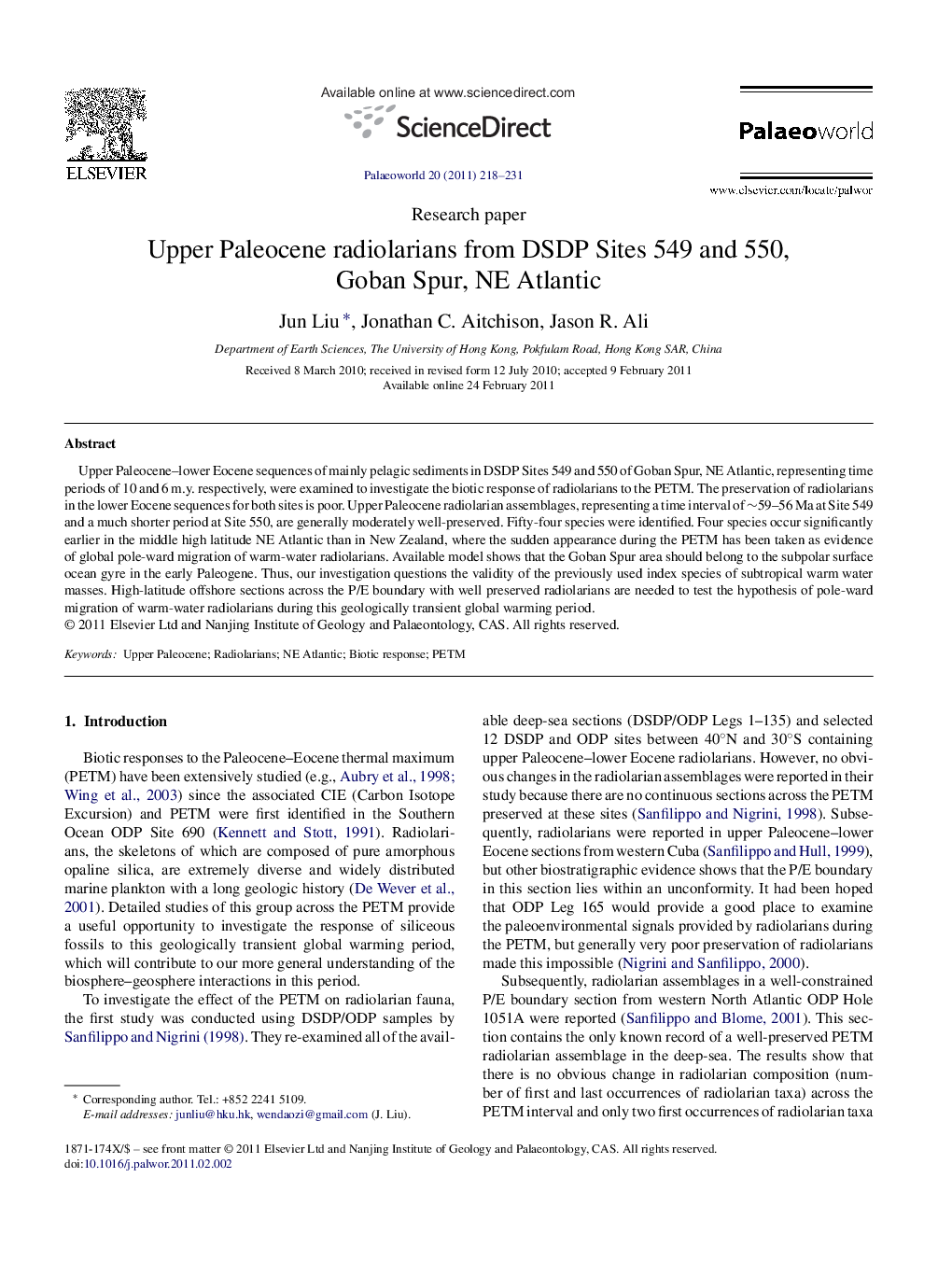| Article ID | Journal | Published Year | Pages | File Type |
|---|---|---|---|---|
| 4749888 | Palaeoworld | 2011 | 14 Pages |
Upper Paleocene–lower Eocene sequences of mainly pelagic sediments in DSDP Sites 549 and 550 of Goban Spur, NE Atlantic, representing time periods of 10 and 6 m.y. respectively, were examined to investigate the biotic response of radiolarians to the PETM. The preservation of radiolarians in the lower Eocene sequences for both sites is poor. Upper Paleocene radiolarian assemblages, representing a time interval of ∼59–56 Ma at Site 549 and a much shorter period at Site 550, are generally moderately well-preserved. Fifty-four species were identified. Four species occur significantly earlier in the middle high latitude NE Atlantic than in New Zealand, where the sudden appearance during the PETM has been taken as evidence of global pole-ward migration of warm-water radiolarians. Available model shows that the Goban Spur area should belong to the subpolar surface ocean gyre in the early Paleogene. Thus, our investigation questions the validity of the previously used index species of subtropical warm water masses. High-latitude offshore sections across the P/E boundary with well preserved radiolarians are needed to test the hypothesis of pole-ward migration of warm-water radiolarians during this geologically transient global warming period.
